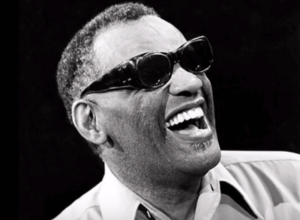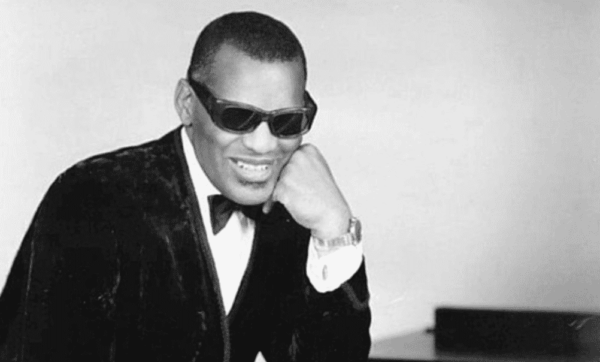Ray Charles, Biography of the Legendary American Musician


Reviewed and approved by the psychologist Gema Sánchez Cuevas
Ray Charles was a pioneer of soul music. Integrating rhythm and blues (R&B), gospel, pop, and country, he created brilliant songs that instantly became hits. For example, “Unchain My Heart”, “Hit the Road Jack”, and “Georgia on My Mind”.
Ray Charles, originally Ray Charles Robinson, was born in the 1930s in Albany, Georgia. He died on June 10, 2004, in Beverly Hills, California. Billed as “The Genius”, Charles was an American pianist, singer, composer, and bandleader.
As we mentioned above, Charles was credited with the early development of soul music. Soul music is a style that combines gospel, rhythm and blues, and jazz music. Charles was a legendary American musician who pioneered the genre of soul music during the 1950s.
Often called the “Father of Soul”, Charles combined blues, gospel, and jazz to create groundbreaking hits.
Ray Charles’ recordings spanned every genre of music, such as rhythm and blues, jazz, rock and roll, gospel, and country. We’re all familiar with such hits like “Georgia On My Mind” and “America The Beautiful”.
However, Ray’s catalog also includes a huge collection of other “classically Ray” recordings. These recordings aren’t as well-known. For example, “Come Live With Me” and “A Song For You”.
“’I was born with music inside me. Music was one of my parts. Like my ribs, my kidneys, my liver, my heart. Like my blood. It was a force already within me when I arrived on the scene. It was a necessity for me – like food or water.”
-Ray Charles-
Early life
Ray Charles Robinson was born on September 23, 1930, in Albany, Georgia. His father was a mechanic and his mother was a sharecropper. The entire family moved to Greenville, Florida, when he was an infant.
Believe it or not, Ray began his musical career at age five on a piano in a neighborhood café. One of the most traumatic events of his childhood was witnessing the drowning death of his younger brother.
Soon after his brother’s death, Ray Charles gradually began to lose his sight. He was blind by the age of seven, possibly from glaucoma. Furthermore, his mother sent him to a state-sponsored school in St. Augustine, Florida.
The school was entitled the Florida School for the Deaf and Blind. While at school, Ray learned to read, write, and arrange music in Braille.
Concentrating on his musical studies, he also learned to play piano, organ, sax, clarinet, and trumpet. The breadth of his musical interests back then ranged widely, from gospel to country and blues.
However, he left school at age fifteen to play the piano professionally after his mother died from cancer. His father had died when the boy was ten.
Musical evolution
While playing piano professionally, he toured on the “Chitlin’ Circuit” in the South for a year. Ray Charles built a remarkable career based on the immediacy of emotion in his performances.
Even so, when he was on the road, he picked up a love for heroin. Heroin is a highly addictive drug. After emerging as a blues and jazz pianist, Charles recorded the boogie-woogie classic “Mess Around” in 1952.
He also recorded the novelty song “It Should’ve Been Me” in 1953. When he was 16, Charles moved to Seattle. There, he met young Quincy Jones, a friend and collaborator he’d keep for the rest of his life.
Charles performed with the McSon Trio in the 1940s. His early playing style closely resembled the work of his major influences: Charles Brown and Nat King Cole. Charles later developed his own distinctive sound.
In 1949, he released his first single, “Confession Blues”, with the Maxin Trio. The song did well on the rhythm and blues charts. More success on the R&B charts followed with “Baby Let Me Hold Your Hand” and “Kissa Me Baby”.
By 1953, Charles landed a deal with Atlantic Records. The musician celebrated his first rhythm and blues hit single with the label, “Mess Around”.
Critical acclaim
A year later, Charles’ now-classic song, “I Got a Woman”, reached #1 on the R&B charts. The song reflected an advance in his musical style. He was no longer a Cole imitator. His fusion of gospel and rhythm and blues helped to create a new musical genre known as soul.
By the late 1950s, Charles began entertaining the world of jazz. He cut records with members of the Modern Jazz Quartet. Fellow musicians began to call Charles “The Genius”, which was an appropriate title for the rambling musician.
He never worked in just one style but blended and beautified all that he touched. It’s no surprise he also earned the nickname the “Father of Soul”. Charles’ biggest success was perhaps his ability to cross over into pop music as well.
He reached #6 on the pop chart. He reached #1 on the R&B chart with his hit “What’d I Say”. The year 1962 brought Charles his first Grammy Award for “Georgia on My Mind”. The following year, he won another coveted Grammy for the single “Hit the Road, Jack”.
For his day, he maintained a rare level of creative control over his own music. Charles broke down the boundaries of music genres in 1962 with Modern Sounds in Country and Western Music. On this album, he gave his own soulful interpretations of many country classics.
Although he thrived creatively, Charles struggled in his personal life. He continued to battle with heroin addiction. In 1965, the police arrested Charles for possession.
Later career
Charles avoided prison after his arrest for possession by finally kicking the habit at a Los Angeles clinic. Although his releases in the 1960s and ’70s were hit-or-miss, he remained one of music’s most respected stars.
Charles won a Grammy Award for his rendition of Stevie Wonder’s “Living for the City”. Three years later, he released his autobiography Brother Ray.
In 1980, Charles appeared in the comedy The Blues Brothers with John Belushi and Dan Aykroyd. The music icon received a special honor a few years later. In fact, he was one of the first people inducted into the Rock and Roll Hall of Fame.
Charles was recognized for his contributions to the genre, alongside such fellow luminaries as James Brown, Elvis Presley, Sam Cooke, and Buddy Holly.
Charles returned to the spotlight in the early 1990s with several high-profile appearances. He recorded commercials for Pepsi-Cola, singing “You Got the Right One, Baby!” as his catchphrase. He also performed “We Are the World” for the USA for Africa organization.
This famous televised event was performed alongside Billy Joel, Diana Ross, Cyndi Lauper, Bruce Springsteen, and Smokey Robinson.
“My version of ‘Georgia’ became the state song of Georgia. That was a big thing for me, man. It really touched me. Here’s a state that used to lynch people like me suddenly declaring my version of a song as its state song. That’s touching.”
-Ray Charles-
Death and legacy
In 2003, Charles had to cancel his tour for the first time in 53 years. He underwent hip replacement surgery. While that operation was successful, Charles soon learned he was suffering from liver disease.
He died on June 10, 2004, at his home in Beverly Hills, California. During his lifetime, Charles recorded more than 60 albums and performed more than 10,000 concerts.
According to The New York Times, longtime friend Quincy Jones was just one of many who mourned Charles’ passing. “There won’t be another musician doing as much to break down the perceived walls of musical genres,” Jones stated.
“Ray used to say that if he had a dime, he would give me a nickel. Well, I would give that nickel back to have him still be here with us. I know that heaven has become a much better place with him in it.”
More than 1,500 people came to say goodbye to the musical legend at his funeral. B.B. King, Willie Nelson, and Stevie Wonder were among those who performed at the service.
Movie and final album
Ray Charles’s final album, Genius Loves Company, was released two months after his death. It consists of duets with various admirers and contemporaries. His life story became a hit film entitled Ray later that year.
Jamie Foxx starred as the legendary performer and won an Academy Award for his portrayal of Charles.
The ultimate Ray Charles collection, entitled True Genius, was released shortly after. This six-disc box set features 90 of his greatest songs. It includes a never-before-released 1972 live concert. It also includes a coffee table book featuring rare photos and extensive liner notes.
In short, Charles was a legendary musician and brilliant performer. His impressive multi-award-winning 50-year career left an indelible mark on contemporary music all over the world. Charles continues to inspire many.
“Music’s been around a long time, and there’s going to be music long after Ray Charles is dead. I just want to make my mark, leave something musically good behind. If it’s a big record, that’s the frosting on the cake, but music’s the main meal.”
-Ray Charles-
All cited sources were thoroughly reviewed by our team to ensure their quality, reliability, currency, and validity. The bibliography of this article was considered reliable and of academic or scientific accuracy.
- Iturbe, B. (2008). Estilo musical: soul. Padres y Maestros/Journal of Parents and Teachers, (320).
This text is provided for informational purposes only and does not replace consultation with a professional. If in doubt, consult your specialist.









